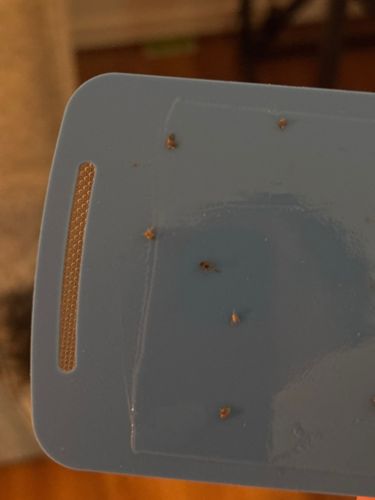Flea
Scientific Name: Ctenocephalides felis (Cat Flea) or Ctenocephalides canis (Dog Flea) are the most common species found in homes.
Order & Family: Order: Siphonaptera, Family: Pulicidae (common fleas, e.g., Cat Flea, Dog Flea)
Size: 1.5 to 3.3 millimeters (0.06 to 0.13 inches)

Natural Habitat
Fleas thrive in warm, humid environments. They are commonly found in homes with pets (dogs, cats), on the pets themselves, in pet bedding, carpets, upholstered furniture, and cracks in floors.
Diet & Feeding
Adult fleas feed on the blood of their hosts (mammals and birds), while larvae feed on organic debris, including adult flea feces (flea dirt).
Behavior Patterns
Fleas are excellent jumpers, capable of leaping up to 13 inches horizontally and 8 inches vertically. They are typically found on their hosts, but can also live and lay eggs in carpets, pet bedding, and other soft furnishings. Their life cycle includes eggs, larvae, pupae, and adults, with the entire cycle taking anywhere from a few weeks to several months depending on conditions.
Risks & Benefits
Risks: Fleas can cause intense itching, allergic reactions, and skin irritation in both humans and pets. They can transmit diseases such as murine typhus and the plague (though rare in developed countries today). They are also intermediate hosts for certain tapeworms (e.g., Dipylidium caninum). Benefits: In natural ecosystems, fleas can be a food source for some predators, but their parasitic nature outweighs any significant benefits to humans.
Identified on: 8/26/2025